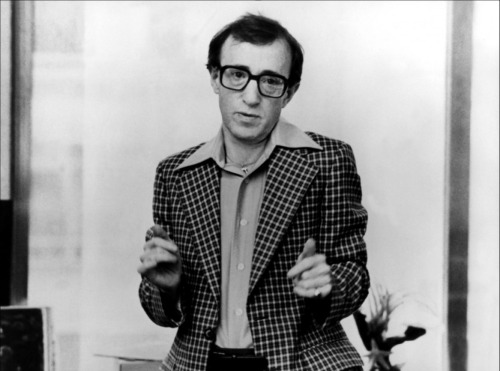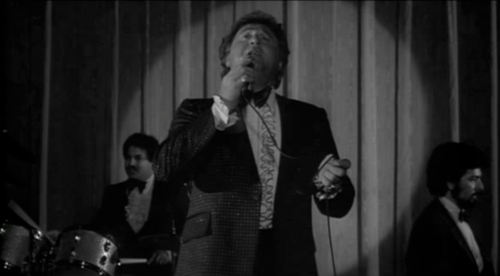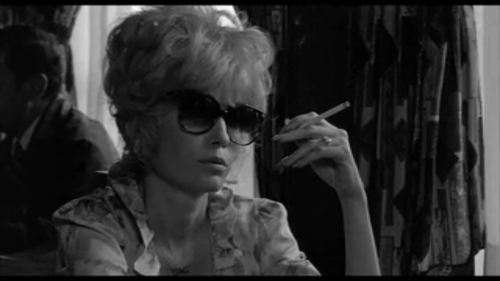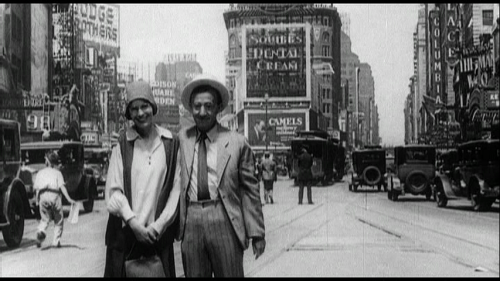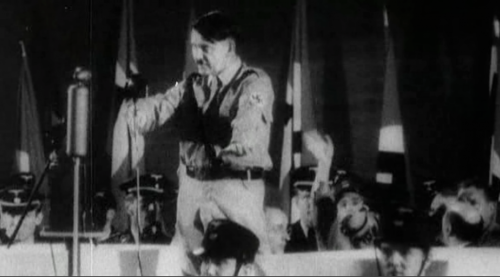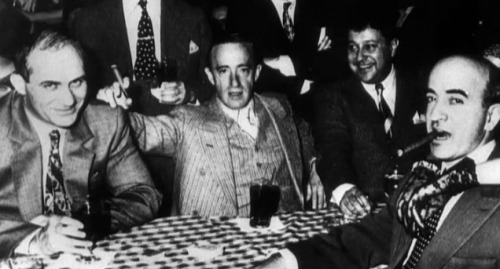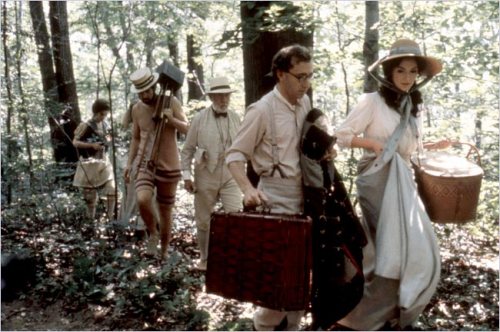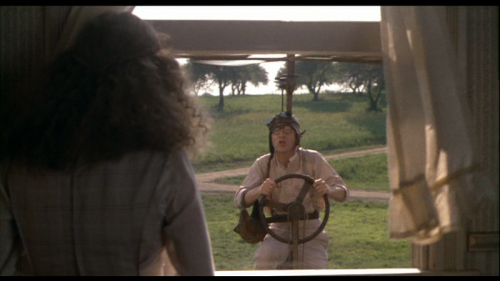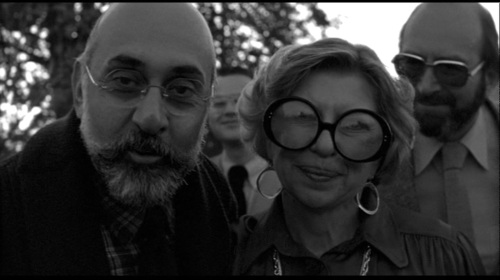The Purple Rose of Cairo
By 1985, Woody is in the heart of his “Golden Age of Mia Farrow” phase. With three collaborations behind them including her spectacular performance in Broadway Danny Rose, Allen next focuses his lens on a softer, more innocent role for Farrow in The Purple Rose of Cairo. Cecilia works as a waitress in a greasy-spoon in New Jersey. Her husband, Monk, is out of work and spends his days shooting dice, boozing, carousing, and generally being The Beast to Cecilia’s Beauty. In order to escape the harsh realities of the Great Depression, Cecilia takes refuge in the local movie-house. She loves movies for the respite the experience offers from her daily life— she savors the fashion, romance, beautiful people, and the kind of perfection only possible in celluloid. Cecilia is a dreamer. She fantasizes about films and a life better than this one. When things in her life are at their worst, she seeks shelter in the matinee showing of the film within the film, The Purple Rose of Cairo. Shot in the style of the champagne pictures of the 1930s, The Purple Rose of Cairo follows bored jet-setters around the globe as they meet explorer Tom Baxter in an Egyptian tomb, only to bring him back to their New York penthouse for a “madcap Manhattan weekend.” To the shock of his co-stars and audience members, Tom Baxter physically leaves the screen and enters the real world once he notices Cecilia in the crowd. “You must really love this picture. You’ve been here all day and I’ve seen you here twice before,” Tom says to her, annihilating the fourth wall. The two run off and so begins an adventure that explores themes familiar to any Woody fan— fantasy vs. reality, magical realism, the role of art, and the impossibility of innocence.
Woody has often lamented the creative process, how a perfect idea gets mangled as it makes its way through the perils of filmmaking. “There’s a big difference between what you set out to make and what you make almost every time,” says Allen in Woody Allen: A Documentary. “There are a lot of surprises that happen between writing it, doing it, and seeing it on the screen. Most surprises are negative. Most surprises are that you thought something was good or funny and it’s not,” he explains. The director is almost always self-effacing regarding his work and its shortcomings. “I’ve made just about 40 films in my life and so few have really been worth anything because it’s not easy,” he says. The Purple Rose of Cairo, it seems, is a rare instance where Woody is happy with the outcome. “Only on The Purple Rose of Cairo,” says Woody to interviewer Stig Bjorkman. “That’s the closest I’ve come to a feeling of satisfaction. After that film I thought, ‘Yes, this time I think I got it right where I wanted to get it.’” It’s rare for Woody to deem one of his films an artistic success, let alone give it praise. Considering the ponderous process it took to get the film into its final form, it’s a wonder it turned out to be one of the few to meet Allen’s expectations.
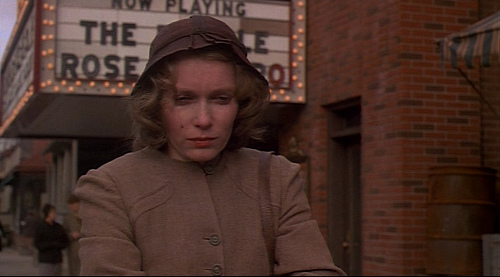
“I wrote half the film and I couldn’t figure out where to go,” Woody explains. “So I put the script away and started to write something else and then came back to it. I got the idea that the thing that made it work as a film was to have the real actor enter the story. And that gave me the whole development.” Once Tom Baxter, played by Jeff Daniels, flees with Cecilia, he quickly learns that life on the other side isn’t as consistent as it is on the silver screen. Their relationship blossoms as he adjusts to the real world. “I just met a wonderful new man,” she says. “He’s fictional but you can’t have everything.” The actor who plays Tom, Gil Shepard, arrives to quell the situation and control his creation. While Tom is innocence incarnate, Gil is calculating, frenetic, and though he shares the same boyish good looks as his on-screen doppleganger, they can be deceiving. When Cecilia has to choose between Tom and Gil she goes with the latter because he’s real, a man of flesh and blood. While Tom can offer an escape from reality, it will ultimately remain a fantasy. Gil is real but, as is the case with life, reality can be cruel. Real people let you down. Real problems don’t end happily ever after like they do in the film world. The Purple Rose of Cairo ends on a melancholy note as Cecilia realizes there’s no escape from her life, other than the precious hours spent at the movies. The weight of the film rests squarely on the shoulders of Jeff Daniels as he plays Tom with an infectious wide-eyed optimism and Gil with a whip-smart irresistible Hollywood charm that’s equal-parts appealing. And to think the film almost didn’t happen this way.
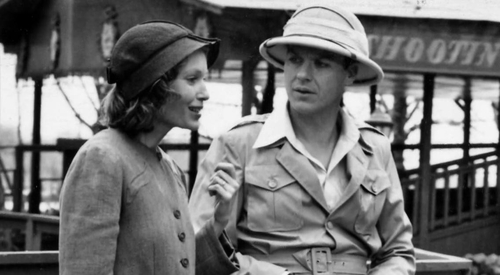
“Woody’s not afraid to change cast members as he goes along if something doesn’t work out,” says Allen biographer Eric Lax. “The best example of this is Michael Keaton in The Purple Rose of Cairo.” Filming began with Keaton playing the dual roles of Tom Baxter and Gil Shepard. Casting Director Juliet Taylor explains, “[Woody] greatly admired Michael Keaton and still does, but never took the time to meet him.” The casting process for Allen’s films is the stuff of legends. Often, the first time many actors speak to or even meet Woody is on the first day of shooting. “Once [Keaton] was there, Woody just felt he was so contemporary for a movie that took plaice in the 1930s, that it just didn’t feel right.” The production was able to re-shoot the scenes with Daniels in Keaton’s place. Woody’s ability to suss out when an actor isn’t working well is admirable but one wonders if it could’ve been avoided.
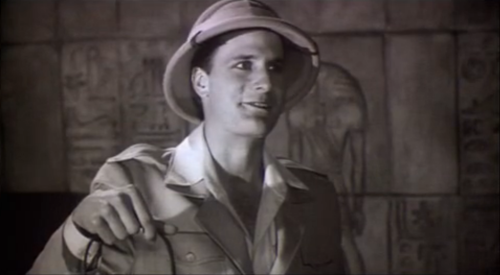
Films, like other forms of art, offer an outlet for escapism. The fantasy of the film world is appealing but, ultimately, one can’t live in a fantasy. The world outside of the theater goes on and problems persist. For Cecilia, the movies offer such an escape. “We go to the movies in order to experience brief lives that are not our own,” writes Roger Ebert. “Allen is demonstrating what a tricky self-deception we practice. Those movie lives consist of only what is on the screen, and if we start thinking that real life can be the same way, we are in for a cruel awakening.” The Purple Rose of Cairo simultaneously shows what’s great about movies, the transportive magic of cinema, while throwing back the curtain on the deceptive ruse of it all. It’s cinematic slight-of-hand at its finest.

